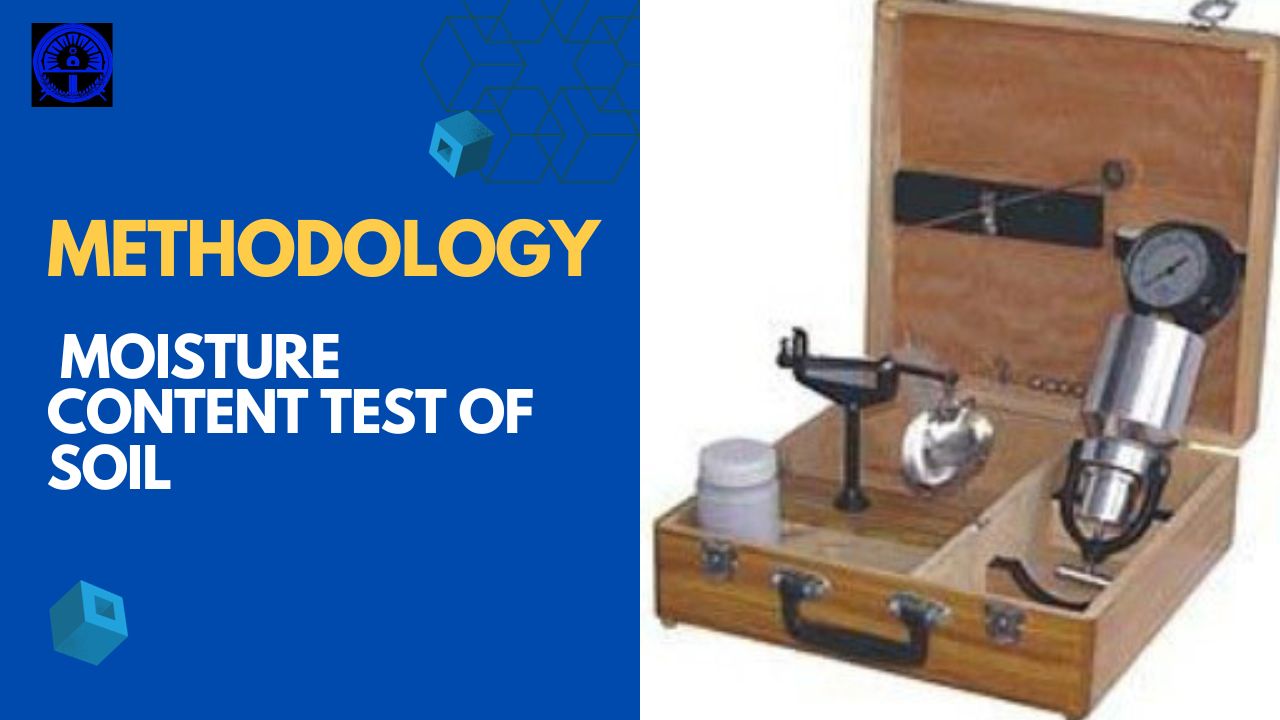The moisture content of soil is a crucial parameter in geotechnical engineering and construction projects. The moisture content of soil is defined as the ratio of the mass of water to the total mass of soil, expressed as a percentage. The Indian Standard (IS) code that provides guidelines for the determination of moisture content in soils is IS 2720 (Part 2): 1973 – “Methods of test for soils: Determination of water content.”
Here is a general methodology for conducting the moisture content test of soil as per the Indian Standard:
Equipment and Materials:
- Sample Containers: Clean and dry containers to collect soil samples.
- Oven: To dry the soil samples.
- Balance: Accurate enough to weigh soil samples.
- Thermometer: To measure the oven temperature.
- Desiccator: To cool the dried soil samples before weighing.
Procedure:
1. Collection of Sample:
a. Collect a representative soil sample using an appropriate method.
b. Ensure that the sample is free from large particles and organic materials.
2. Initial Weighing:
a. Weigh an empty, clean, and dry container (W1).
b. Place a portion of the soil sample into the container and weigh the container with the soil (W2).
3. Drying Process:
a. Spread the soil evenly in the container.
b. Place the container with the soil in an oven set at a temperature of 105 ± 5°C.
c. Dry the soil until its weight becomes constant. This may take several hours, and periodic weighing is necessary.
4. Final Weighing:
a. After drying, cool the container with the soil in a desiccator.
b. Weigh the container with the dried soil (W3).
5. Calculation:
a. Calculate the moisture content using the formula:

b. Report the moisture content to the nearest 0.1%.
Precautions and Tips:
- Ensure that the oven temperature is maintained at 105 ± 5°C.
- Handle the soil samples carefully to prevent contamination.
- Use clean and dry equipment to avoid errors in measurements.
- Record all weights accurately.
- Repeat the test for duplicate samples to ensure consistency.
Always refer to the specific version of the Indian Standard (IS 2720 – Part 2: 1973) or the latest revision for any updates or modifications to the methodology. Additionally, laboratory practices may vary, so it’s essential to follow the guidelines and procedures established by the testing facility or project specifications.
Certainly! Let’s go through a simplified example of the moisture content test using hypothetical values for better understanding:
Example OF SOIL MOISTURE TEST :
Given Data:
- Initial weight of empty container (W1): 50 grams
- Weight of container with wet soil (W2): 120 grams
- Final weight of container with dried soil (W3): 80 grams
Calculation:

Interpretation:
In this example, the calculated moisture content of the soil is 175%. This means that the soil contains 175% water by weight compared to its dry weight.
Please note that in practical situations, moisture content values are typically less than 100%. Extremely high values may suggest errors in the testing process or the presence of additional substances in the soil. Always ensure that the test is conducted carefully and that all equipment is clean and

